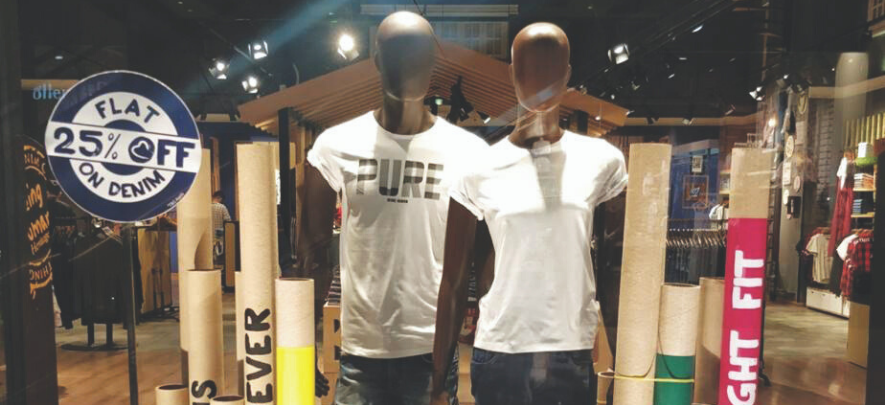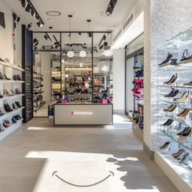Being responsible

Retail
285 week ago — 6 min read
Sustainable visual merchandising can help fashion retailers reduce the impact on environment while saving costs.
Back in 1987, the United Nation called attention to the catastrophic impact of human activities on the environment through its report ‘Our Common Future’. The conversation around the topic has gathered considerable steam since then and now with several more studies and reports constantly warning us about the reduction of natural resources, the spread of pollution and our walk towards extinction as the consequence of our production and consumer patterns. With the awareness about climate change and depletion of resources on the rise, everyone has been trying to be eco-sensitive and more responsible.
The Need
The fashion industry is the second largest cause of pollution. The symbolization of ‘trend’ in general and the change of style and replacement of old with new in particular, denotes some discrepancy to the concept of sustainability. Specifically, in apparel, where the production and consumption of fashion products involve toxic wastes and harmful environmental effects in all stages, development of sustainable fashion becomes a necessity. Various steps are being taken with regard to safer production methods and use of sustainable materials.
Apart from ethical reasons, being sustainable offers a great wealth of benefits for both retailers and consumers.
However, the responsibility doesn’t just end with the producers. Retailers too need to do their bit. There are various steps after production of garments, which also requires us to be just as responsible.
The Benefits
Apart from ethical reasons, being sustainable offers a great wealth of benefits for both retailers and consumers. According to a report by the Retail Industry Leaders Association (RILA), 93% of global consumers expect more of the brands they use to support social and environmental issues. Sustainability also gives your brand an opportunity to connect better with your consumers. As per the ‘new consumerism’ philosophy, based on a group of findings by consumer research firm Euromonitor, consumers think deeply about what they value before they make purchases. This includes social and environmental impact.
Also read: Innovation in e-commerce packaging: Key to a sustainable future
Sustainable Visual Merchandising
Physical stores display a brand’s identity and contribute massively to the maintenance of a consistent brand image. This is why sustainability should not only focus on production processes or good working conditions but should also be applied to retail design.
We, at The Mandhana Retail Ventures Ltd. (TMRVL)—Being Human, try to make sustainability colourful, motivating and enjoyable. Our focus is on reusing materials for store displays instead of discarding them once the season or its need is over. We have been reusing materials and props since many years now.
Here are a few ways we have incorporated sustainability in our store displays:
- We avoid using paper in folding clothes for stacking in the store. Instead, we reuse the papers we get when we receive garments from the warehouse. We use the same packing paper as stacking paper.
- For our 2013 collection display in stores, we had used tin paint cans, which we used for various store displays till 2016.
- The green LED lights used in 2014 Christmas display were used again in 2015 along with some new elements.
- The metal frames, MDF boards and sunboards used in 2015 Spring/Summer displays were reused in 2016 for different displays in various ways. For example, we used the back side of the frame and MDF by adding a vinyl reflective on it for one of our displays.
- The wooden ladders used in a 2015 display were reused in 2017 for different displays.
- In 2018, along with reusing the metal frame, we also used the MDF board and stands used in our earlier season’s display
- When the company’s name changed from MRVL to TMRVL, to avoid wasting more material, we printed the new logo and name and pasted it on the back side of the already existing metal frame.
- We have been reusing the metal stands used in 2018 displays with a few tweaks and the addition of cores. We plan to continue using the same for our future displays.
A sustainable business only brings respect from customers but also helps them save money and resources in the long run. It also catalyses creative and thinking and innovation. We, at TMRVL Being Human, strongly believe in looking good by doing good, and are always looking at new ways to be sustainable. We hope to inspire and encourage other retailers to take a step in this direction as well.
Also read: It's about the story
Article by Karan Berry published in STOrai Magazine. Karan Berry holds a Master’s degree in Indian Aesthetics, Advanced Diploma in Cordwainers Footwear Design from London College of Fashion. He is the Creative Director - VM, Projects & Marketing at TMRVL Being Human.
Disclaimer: The views and opinions expressed in this article are those of the author and do not necessarily reflect the views, official policy or position of GlobalLinker.
View STOrai 's profile
Other articles written by STOrai Magazine
The Art & Science of People Pleasing in Retail
13 week ago
Most read this week













Comments
Share this content
Please login or Register to join the discussion